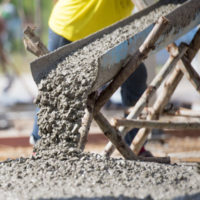MENU
- Home
- Overview
- Attorneys
- Practice Areas
- Firm News
- Blog
- Contact
 A recent Centers for Disease Control and Prevention (CDC) report highlighted the risks of chronic respiratory illness for individuals working with engineered stone commonly used in residential and commercial buildings. Currently the most widely used material for kitchen and bathroom countertops and vanities, artificial stone in its finished form is not dangerous. Yet, workers who chisel, grind, and polish these materials inhale tiny silica particles that can lead to silicosis, a serious and fatal condition.
A recent Centers for Disease Control and Prevention (CDC) report highlighted the risks of chronic respiratory illness for individuals working with engineered stone commonly used in residential and commercial buildings. Currently the most widely used material for kitchen and bathroom countertops and vanities, artificial stone in its finished form is not dangerous. Yet, workers who chisel, grind, and polish these materials inhale tiny silica particles that can lead to silicosis, a serious and fatal condition.
Silica, or quartz, is a common mineral found in a wide variety of building materials, such as concrete, sand, soil, and granite. When these materials are disturbed by cutting or grinding, tiny crystalline particles become airborne. If these particles are inhaled, they can lead to debilitating and fatal conditions, including:
Silicosis develops within a few weeks to several years after exposure. Silica dust causes fluid and scar tissue to develop in the lungs, making it difficult to breathe. Over time, people with silicosis often need oxygen and other devices to help with breathing. Based on extensive scientific research on the dangers of silica dust exposure, both the World Health Organization and the American Cancer society identified crystalline silica as a known human carcinogen.
In 2016, the Occupational Safety and Health Administration (OSHA) reduced the amount of silica dust permitted in workspaces by half, a move that some industry groups found excessive. Yet, others want more far-reaching safety standards that include specific guidelines for workers who cut and shape engineered stone. Currently, OSHAs’ silica standard for construction requires the following safety practices:
If you were harmed by exposure to a toxic chemical or substance, you do have recourse to seek damages for your medical bills and lost wages while you are unable to work. To receive the compensation you deserve for a preventable illness, you must prove exposure to a toxic material occurred and that exposure directly caused your illness. It takes an experienced Wilmington environmental lawyer to make this connection.
If exposure to silica dust, mold, pesticides, or tainted water left you fighting a chronic or life-threatening condition, you may have cause to bring a claim against the person or company who should have protected you. To learn more about your rights and legal options, contact a Wilmington environmental lawyer at Jacobs & Crumplar, P.A. With offices in Wilmington and Millsboro, Delaware, we work with clients throughout the state, including Dover, New Castle County, and Sussex County. Call us at 302-656-5445 or contact us online for a free consultation.